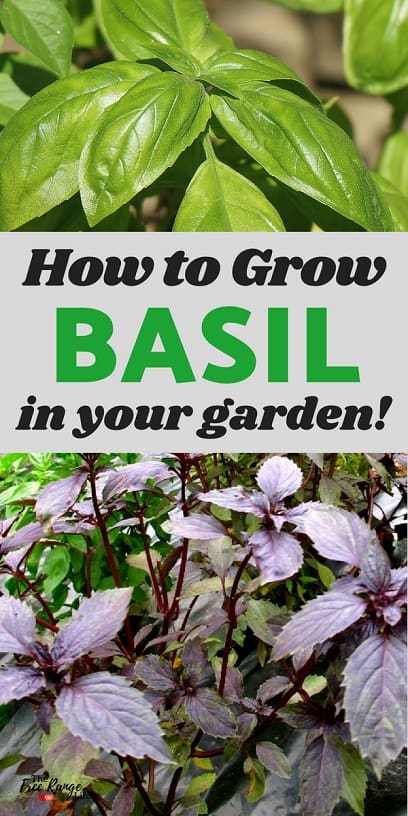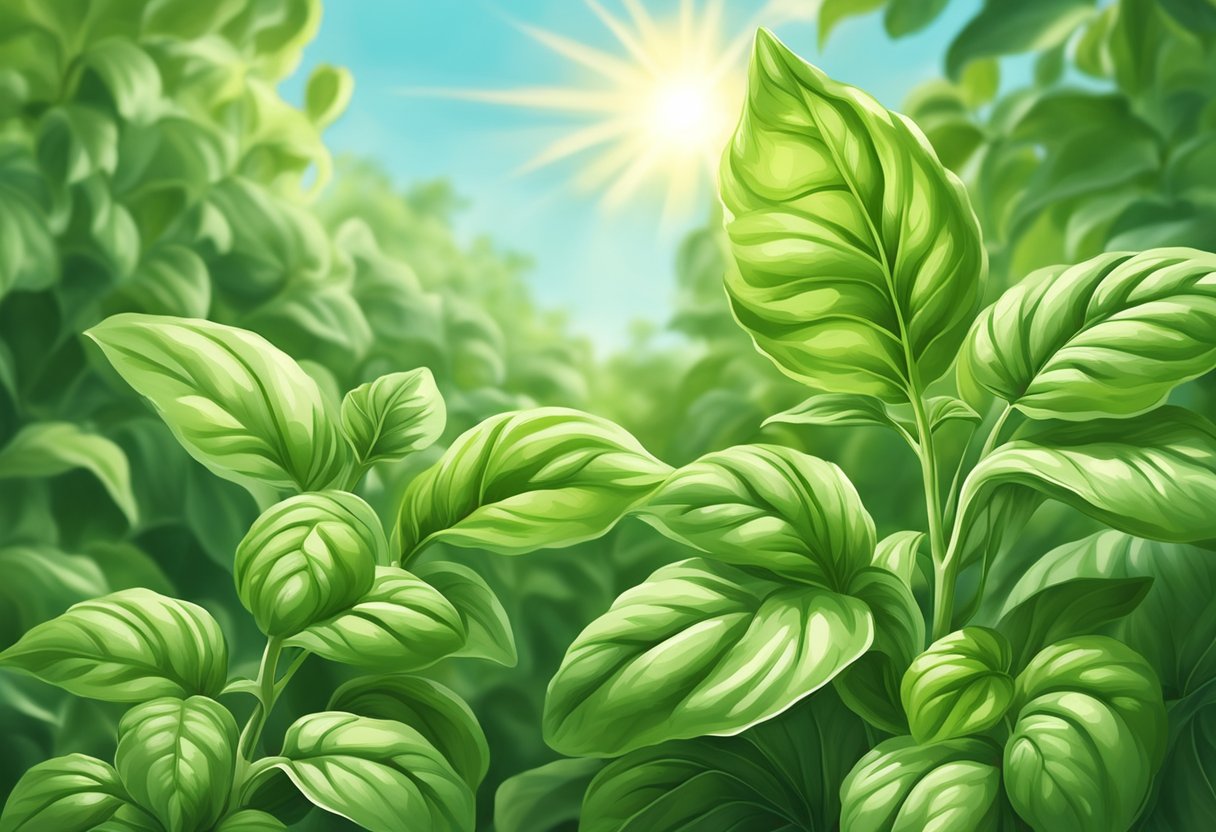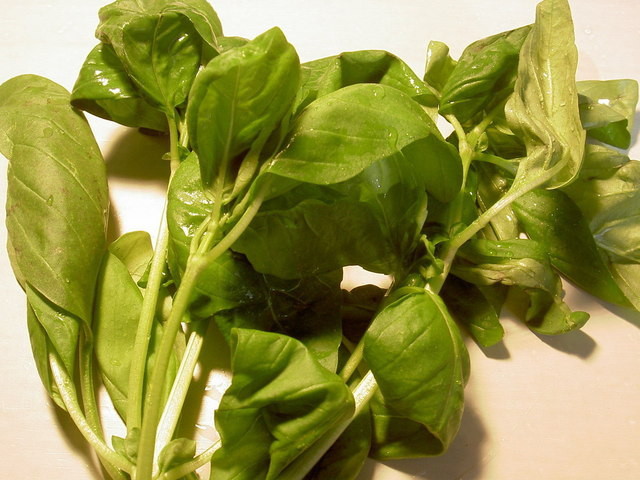What is Basil: A Brief Overview
Basil is one of the most popular and versatile herbs used in cooking, known for its sweet and aromatic flavor. It is a member of the mint family and is native to tropical regions of Central Africa and Southeast Asia. With over 160 species, basil is a staple herb in many cuisines, including Italian, Thai, and Indian cooking. Understanding the life cycle of basil is crucial for gardeners and cooks alike, as it can help them optimize their growing and harvesting techniques. Whether you’re a seasoned gardener or a culinary enthusiast, knowing the basics of basil can elevate your cooking and gardening experience.
Basil is a warm-season crop that thrives in temperate climates with plenty of sunlight and well-draining soil. It is commonly used in a variety of dishes, from pesto and caprese salads to stir-fries and curries. With its numerous health benefits and culinary uses, it’s no wonder why basil is a favorite among gardeners and cooks. But have you ever wondered, is basil perennial or annual? Understanding the answer to this question can help you make the most of your basil plants and enjoy a bountiful harvest all year round.
Is Basil a Perennial or Annual: The Answer Revealed
One of the most common questions asked by gardeners and cooks is, is basil perennial or annual? The answer lies in the plant’s life cycle and growing conditions. Basil is typically grown as an annual, meaning it completes its life cycle within a year and does not come back the following year. However, in certain conditions, basil can be grown as a perennial, meaning it will come back year after year.
The main difference between annual and perennial plants is their life cycle. Annual plants, like basil, germinate, grow, produce seeds, and die all within a year. Perennial plants, on the other hand, live for more than two years and often regrow new growth from the same roots. In the case of basil, it can be grown as a perennial in warmer climates with mild winters, where the plant can survive the winter months and regrow in the spring.
In regions with frost, basil is typically grown as an annual, as the plant is sensitive to cold temperatures and will die off with the first frost. However, with proper care and protection, basil can be grown as a perennial in these regions as well. By understanding the life cycle of basil and its growing conditions, gardeners and cooks can optimize their growing and harvesting techniques to get the most out of their basil plants.
How to Grow Basil as a Perennial: Tips and Tricks
Growing basil as a perennial requires careful planning and attention to detail. To start, choose a variety of basil that is known to be perennial, such as ‘African Blue’ or ‘Holy Basil’. These varieties are more likely to survive the winter months and regrow in the spring.
Next, provide optimal growing conditions for your basil plants. This includes full sun to partial shade, well-draining soil, and a warm temperature between 60-80°F (15-27°C). Basil plants also require regular watering, but make sure not to overwater, as this can lead to root rot and other problems.
To protect your basil plants from frost, bring them indoors during the winter months or use a frost blanket to cover them. You can also mulch around the base of the plants to retain heat and moisture. By following these tips, you can successfully grow basil as a perennial and enjoy a year-round harvest.
In addition to these tips, consider using a technique called “pinching” to encourage bushy growth and prevent flowering. Pinching involves removing the top set of leaves from the stem, which will help to promote branching and prevent the plant from going to seed. This will also help to increase the yield of your basil plants and keep them healthy and productive.
The Benefits of Growing Basil as a Perennial
Growing basil as a perennial offers several advantages over growing it as an annual. One of the most significant benefits is the ability to harvest basil year-round. With a perennial basil plant, you can enjoy a continuous supply of fresh basil leaves, without having to replant every year.
Another benefit of growing basil as a perennial is reduced seed costs. When you grow basil as an annual, you need to purchase new seeds every year. By growing it as a perennial, you can save money on seeds and enjoy a steady supply of basil without the added expense.
Perennial basil plants also tend to have a more intense flavor and aroma than annual plants. This is because the plant has more time to develop its roots and absorb nutrients from the soil, resulting in a more complex and nuanced flavor profile.
In addition to these benefits, growing basil as a perennial can also help to reduce waste and promote sustainability. By growing a single plant that can be harvested multiple times, you can reduce the amount of packaging and waste associated with buying fresh basil at the store.
Overall, growing basil as a perennial offers a range of benefits that make it an attractive option for gardeners and cooks. Whether you’re looking to save money, reduce waste, or simply enjoy a steady supply of fresh basil, growing basil as a perennial is definitely worth considering.
Common Mistakes to Avoid When Growing Basil
While growing basil can be a rewarding experience, there are several common mistakes to avoid in order to ensure a healthy and productive harvest. One of the most common mistakes is inadequate sunlight. Basil requires at least 4-6 hours of direct sunlight per day, so make sure to plant it in a location that receives plenty of sunlight.
Another mistake to avoid is overwatering. Basil prefers well-draining soil and can be susceptible to root rot if the soil is too moist. Make sure to water your basil plants regularly, but avoid getting the leaves wet to prevent fungal diseases.
Poor soil quality is also a common mistake to avoid when growing basil. Basil prefers soil that is rich in organic matter and has a pH between 6.0 and 7.0. Avoid using soil that is too dense or compacted, as this can prevent the roots from growing properly.
Not pruning or pinching back the plant is another mistake to avoid. Pruning and pinching back the plant helps to promote bushy growth and prevent the plant from flowering. This will also help to increase the yield of your basil plants and keep them healthy and productive.
Finally, not protecting the plant from pests and diseases is a common mistake to avoid. Basil is susceptible to pests such as aphids, whiteflies, and spider mites, as well as diseases such as powdery mildew and root rot. Make sure to monitor your plants regularly and take action quickly if you notice any signs of pests or diseases.
How to Care for Basil Plants: A Comprehensive Guide
Caring for basil plants requires attention to detail and a commitment to providing optimal growing conditions. One of the most important aspects of basil care is pruning. Pruning helps to promote bushy growth, prevent the plant from flowering, and increase the yield of leaves.
To prune your basil plant, simply pinch off the top set of leaves from the stem. This will encourage the plant to grow more leaves and prevent it from flowering. You can also prune the plant to maintain its shape and promote healthy growth.
Fertilizing is also an important part of basil care. Basil plants require a balanced fertilizer that is high in nitrogen, phosphorus, and potassium. You can use a liquid fertilizer or a granular fertilizer, depending on your preference.
Pest management is also crucial when it comes to basil care. Basil plants are susceptible to pests such as aphids, whiteflies, and spider mites. To prevent infestations, make sure to inspect your plants regularly and take action quickly if you notice any signs of pests.
Finally, make sure to provide your basil plants with optimal growing conditions. This includes providing plenty of sunlight, water, and nutrients. By following these tips, you can help your basil plants thrive and enjoy a bountiful harvest.
In addition to these tips, consider using companion planting to enhance the growth and flavor of your basil plants. Companion planting involves planting different plants together to improve their growth and flavor. Some good companion plants for basil include tomatoes, peppers, and mint.
Using Basil in Cooking: Ideas and Inspiration
Basil is a versatile herb that can be used in a variety of dishes, from classic Italian recipes to modern fusion cuisine. One of the most popular ways to use basil is in pesto sauce, which is made by blending basil leaves with garlic, pine nuts, Parmesan cheese, and olive oil.
Basil is also a key ingredient in many Thai dishes, such as stir-fries and curries. It pairs well with ingredients like chilies, lemongrass, and lime leaves, and adds a bright, fresh flavor to any dish.
In addition to its use in savory dishes, basil can also be used in sweet treats like desserts and drinks. Basil ice cream, basil lemonade, and basil sorbet are just a few examples of the many creative ways to use basil in sweet recipes.
When using basil in cooking, it’s essential to remember that the herb is highly perishable and should be used fresh. You can also preserve basil by freezing or drying it, which allows you to enjoy its flavor year-round.
Some popular pairing suggestions for basil include:
- Tomatoes: Basil and tomatoes are a classic combination, and are often used together in dishes like caprese salads and pasta sauces.
- Mozzarella cheese: The creamy texture of mozzarella cheese pairs perfectly with the bright, fresh flavor of basil.
- Grilled meats: Basil adds a delicious flavor to grilled meats like chicken, steak, and salmon.
- Seafood: Basil pairs well with seafood like shrimp, scallops, and fish, and is often used in seafood dishes like seafood salads and pasta sauces.
Conclusion: Unlocking the Full Potential of Basil
In conclusion, understanding the life cycle of basil is crucial for gardeners and cooks alike. By knowing whether basil is a perennial or annual, and how to grow and care for it, you can unlock the full potential of this versatile herb. Whether you’re looking to add fresh flavor to your cooking or want to experiment with new recipes, basil is a great choice.
By following the tips and advice outlined in this article, you can successfully grow and use basil in your cooking. Remember to choose the right variety, provide optimal growing conditions, and protect the plant from frost. With proper care and attention, basil can be a rewarding and delicious addition to your garden and kitchen.
So why not give basil a try? Whether you’re a seasoned gardener or a culinary novice, this versatile herb is sure to delight. With its bright, fresh flavor and numerous health benefits, basil is a great choice for anyone looking to add some excitement to their cooking. So go ahead, get creative with basil, and unlock its full potential!








